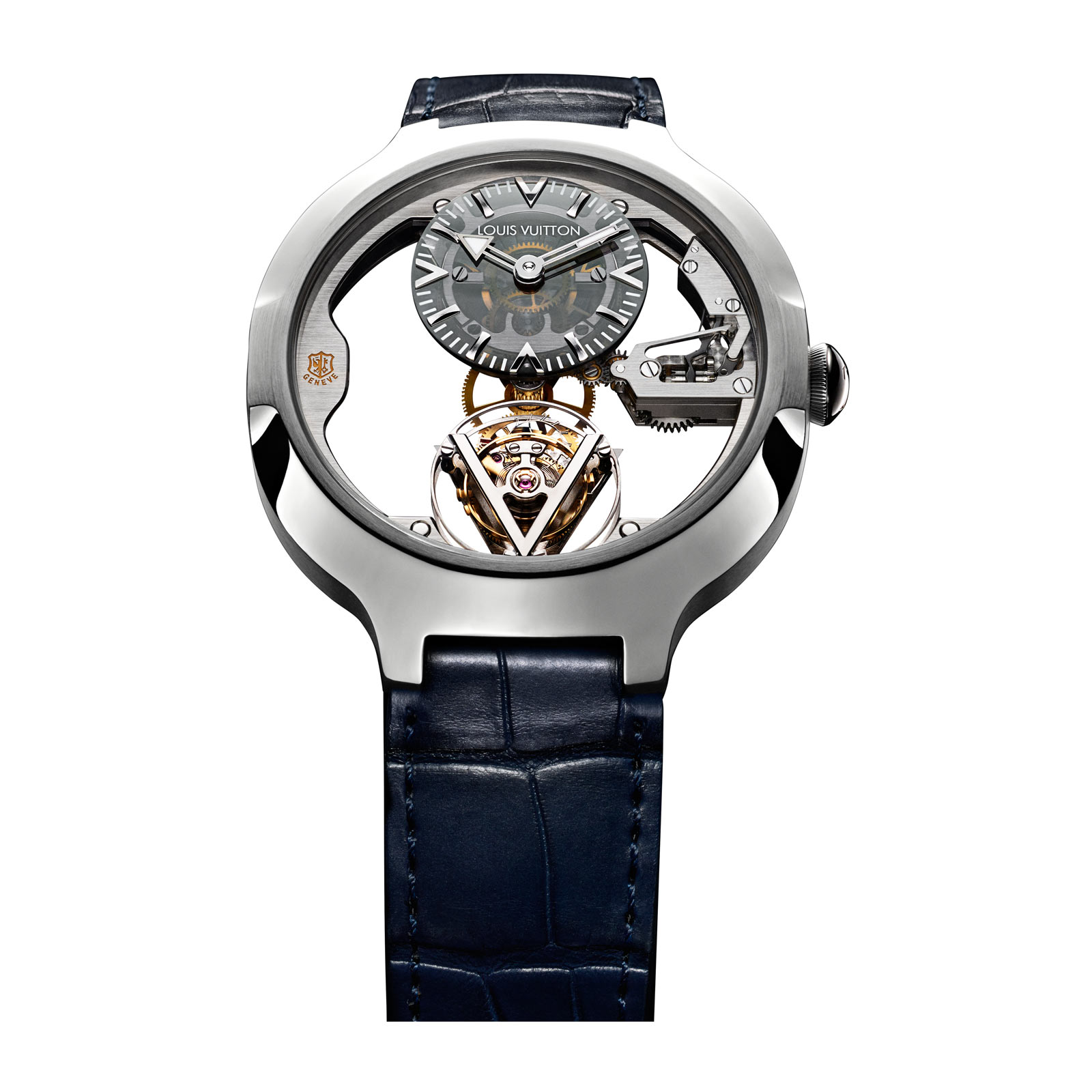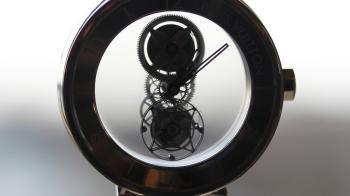There are three of them. All in platinum, all with a tourbillon, all designed and made entirely by Louis Vuitton at La Fabrique Du Temps, its Geneva workshop. Together, they tell a complete design story: a story about the gradual elimination of metal, and its replacement with air – that most precious material of horological sophistication.
In 2016, Louis Vuitton introduced the Voyager Flying Tourbillon. It was the company’s first timepiece to bear the Geneva Hallmark, and it was an exploration of three new directions. First, the shape of the watch was completely new, with its mobile bezel and rounded edges, and it remains an outlier in watch design. Next, there was the extremely light and airy movement architecture (prepare to see more like this...) with no visible means of attachment to the case. And finally, a standard of finish and design quality that met the requirements of the Geneva Hallmark – a considerable achievement in itself. As you will see from the story that follows, it is the architecture of the Voyager Flying Tourbillon that has travelled the furthest.

When Louis Vuitton first unveiled the Tambour Moon Flying Tourbillon, its calibre was practically identical to that of the Voyager, with two differences. The first was a medallion located at 9 o’clock. On the demonstration models, it featured the initials LV, but this space was intended to be personalised according to the client’s wishes, a service that the company has offered from its very first tourbillon. It could even be removed altogether, to increase the watch’s transparency. The second detail is that the back of the movement is supported by a plate in the form of two concentric circles that make the watch opaque. There are two reasons for this: first, there was no question of simply lifting the Voyager’s movement, and also, a baseplate is useful for concealing wrist hairs. Not everyone appreciates the sight of framed follicles! It’s also important to note that the watch case back then was the newly minted Tambour Moon, a subtle update of the model that inaugurated Louis Vuitton’s contemporary watchmaking adventure, with its distinctive concave caseband.

For the third chapter in the story, we have to go further back in time. In 2012, Louis Vuitton unveiled a watch that was significantly ahead of its time. The Tambour Mystérieuse was nothing but a void, in the middle of which hovered an eight-day movement whose rubies outlined an enigmatic design. It left a mark on the company’s creative psyche, which has re-emerged this year in the Tambour Moon Mystérieuse Flying Tourbillon.

The movement is similar to that of the Voyager, although the winding mechanism is gone. The movement floats inside the case with no visible means of support. In fact, it’s held in place with sapphire discs, a feat of some ingenuity. The tourbillon is a “flying” tourbillon in the watchmaking sense because it has no upper bridge. But it also doesn’t really have a lower bridge either – at least, not one that’s visible. The entire movement appears to be “flying”. This is not the only watch to use sapphire to create a levitation effect, but it remains one of the most breathtaking.





